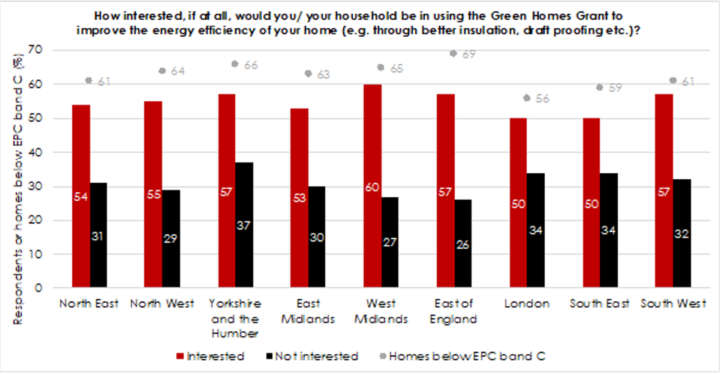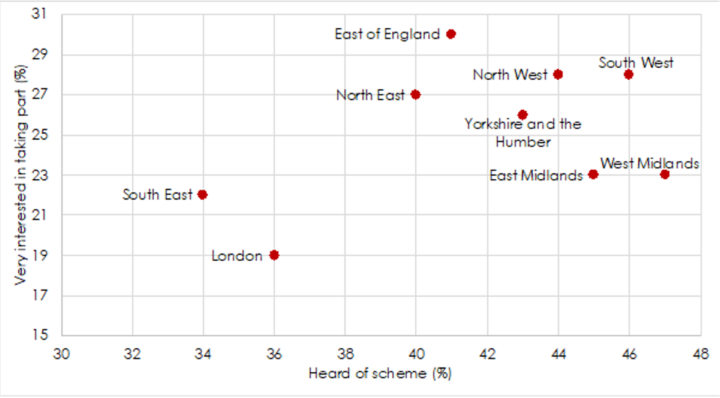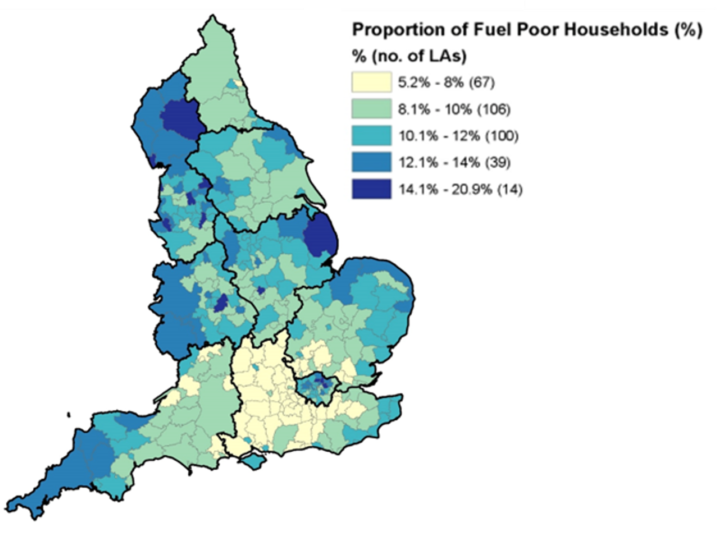Green Homes Grant polling: policy implications of a predicted surge in demand
Jess Ralston analyses the results from new polling on the awareness and interest in the Green Homes Grant

By Jess Ralston
@jessralston2Share
Last updated:
The Green Homes Grant is the most ambitious energy efficiency policy set out for the able to pay market to date. Giving out over half a million vouchers worth up to £5,000 (£10,000 for fuel poor households) for a variety of measures shows that Number 10 is clearly ready to start investing in a net zero housing stock.
Unsurprisingly, free cash from the Government has created an appetite for the vouchers from the public. So much so, a new poll by YouGov and commissioned by the ECIU reveals 22 times more people are interested in taking part in the Green Homes Grant scheme than there is capacity for currently.
And that’s when only 41% of people in total had heard of the scheme. Indications are therefore this is likely to be an impressive scheme, with popularity only rising as word-of-mouth and recommendations boost the number of people aware of the policy.
Analysis of the results
Further analysis of results from the poll shows that 55% of respondents to the survey were very or fairly interested in the grant. This means we could see up to 13.2 million of the 24 million homes in England seek to take part – 22 times higher than the 600,000 vouchers currently on offer.
As the homeowner must be the one to take part in the scheme, even with the rental market eliminated from the findings, the vouchers would still be in demand – in this case for every one voucher available, 16 households being interested.
And if we distil down the figures even further, limiting those homeowners that wish take part into just ‘very interested’ households (30% respondents), the scheme would be outstripped by 8 households in competition for every voucher.

This is a total of 4.5 million households, spread across every region, and minimising the amount of greenhouse gas emissions from our housing stock, notoriously a very difficult sector to tackle.
In this case, it’s hard to see why the scheme may be drawn to a close after only a quick 6 months in action, given all the time that the industry has had to wait for a decent policy in this sector.
Deprived regions stand to gain most
The polling also shows that areas with the poorest energy efficiency, perhaps understandably, are most interested in the grant. Examples of this are the West Midlands, East England and Yorkshire and the Humber, where the percentage of respondents ‘interested’ was highest and these three regions have the highest percent of homes below Energy Performance Certificate band C – the Government’s target for 2035.

Also important to note is the disparity between the regions that had heard of the scheme, and were ‘very’ interested, such as the South West and North West, compared to those that had not heard of the scheme and were not as interested. This may show a link between the knowledge of the scheme and its success in differing areas – those who were aware were logically more interested in taking part.

Furthermore, another reason why households in areas away from London and the South East may be more interested is the varying levels of energy efficiency between regions, which many are suggesting should form a crucial part of the Government’s levelling-up agenda. Regions such as the North West and South West typically have lower energy efficiency levels, in this case 61% and 64% of homes below EPC band C respectively, compared to London and the South East that have a lesser proportion (56% and 59%).
And while these differences in proportions may seem negligible in the grand scheme of things, for households living in fuel poverty – which is highest in the West Midlands, East of England and North West – the effects of poor energy efficiency are very real.
In some local authorities in these regions, up to a fifth of the population are living in cold, damp homes that they cannot afford to heat properly. The Green Homes Grant will award these households up to £10,000 for energy saving measures to cover the full costs of any work done. This scheme is therefore very likely to have a tangible positive impact on many families in areas ripe for levelling up.

Longer term investment may be necessary
Results of the polling reveal a positive outlook for the scheme that may signal that the Government needs to start seriously thinking about continuing it.
This is particularly true during the pandemic when less people may be comfortable with having work done inside the home, so extending the scheme to allow as many people to access it as possible, and upping the number of vouchers that are available significantly to make sure the demand is met.
Not only improving the energy efficiency and decreasing bills for families across England, this would certainly help to reverse the cycle of boom-and-bust financing that has become so common in the energy efficiency industry.
It would allow businesses, commonly small or micro-sized (‘white van’) businesses, spaced out throughout the country, to invest in training and employing more staff at a time when enhancing employment and investment into levelling up is so important.
However, long term policy security is needed to guarantee that this investment by small businesses, which are likely to have had a hard year already, will be recuperated – giving yet another grounds for extension of the scheme to maximise the benefits.
Emission reductions from a hard to treat sector, a boost to construction jobs, all at the same time as putting money back into families with tightened purse-strings during the pandemic, makes both economic and political sense. As the Green Homes Grant gets underway in a few days time, we will start to see just how many of the households interested take part, and just how the potential of the UK’s construction workforce can be unleashed to improve homes on the path to net zero.
With free Government cash currently available for such a limited time, demand is expected to be high. Providing a much-needed sense of security for an industry that has been hard hit not only during the pandemic but from an absence of such an ambitious policy for many years is also likely to be popular amongst the installers spread around England and one that the Government may wish to continue well beyond March 2021.
Share